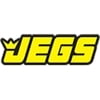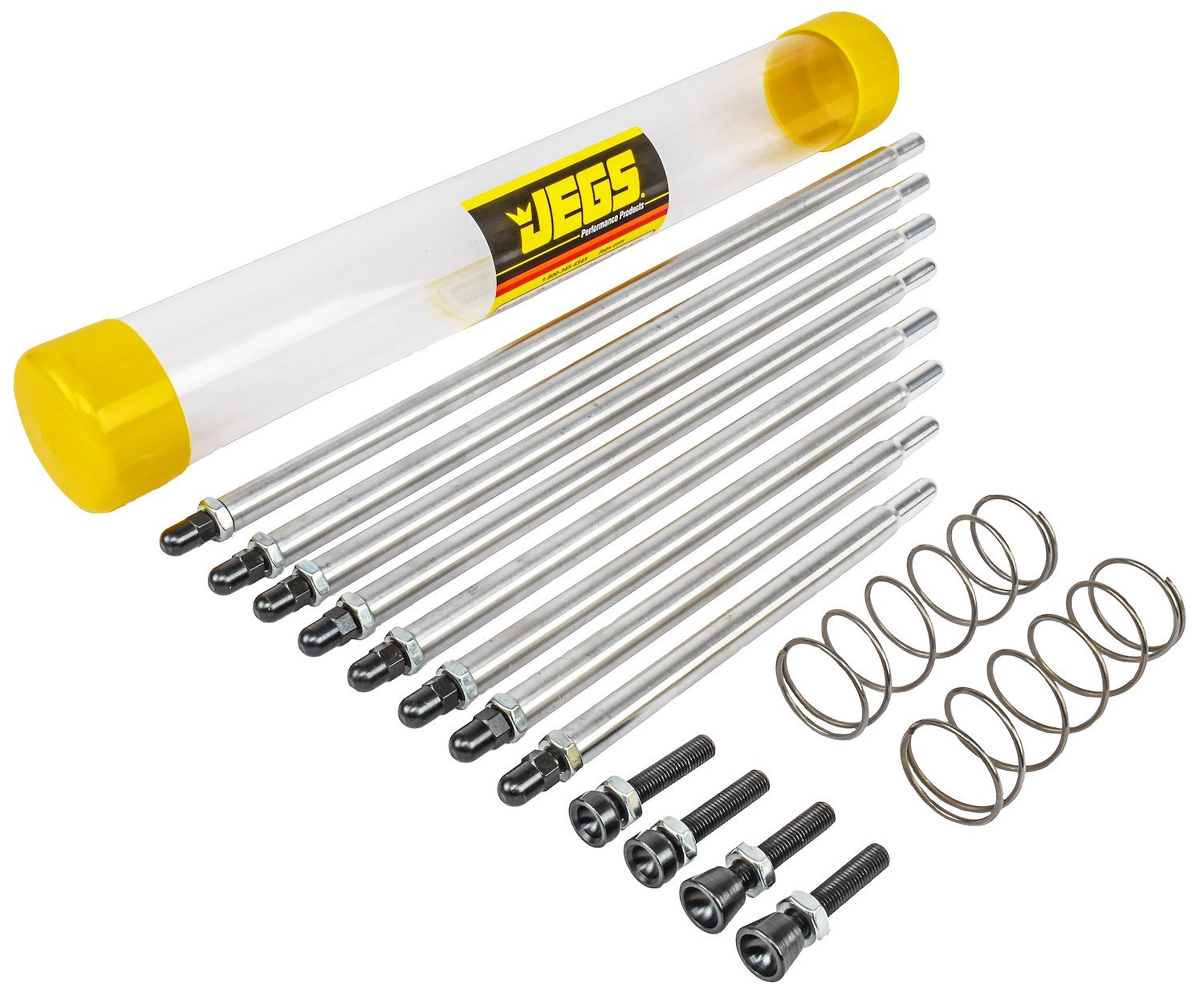Complete Kit
JEGS 555-80670 Master Pushrod Length Checker Kit
- Confirm the correct length pushrod quickly, easily, and accurately
- Measurement range from 7 in. to 14.750 in.
- Includes: (8) adjustable 3/8 in. aluminum pushrods, (2) 5/16 in. cup tips, (2) 3/8 in. cup tips, (2) valve checking springs, and (1) storage cylinder
- Engines with 5/16 in. pushrods using pedestal mount rocker arms will require any guide plates to be removed and that height added to the measurement
FAQ
How do I know how long my pushrods need to be?
- Use a pushrod length checker kit to determine the correct length. Follow the provided instructions and measure the required length to ensure optimal valve train performance for your engine.
How do you determine pushrod length with hydraulic lifters?
- Utilize a pushrod length checker kit along with a hydraulic lifter modified to make it solid eliminating pre-load.
Does pushrod length affect valve lift?
- Yes, pushrod length plays a crucial role in valve lift. Incorrect lengths can impact the valve's ability to open fully. Use a pushrod measuring tool to achieve precise lengths, optimizing valve lift and overall engine performance.
Specifications:
Can this be used with the actual valve springs or do you have to replace the springs with the lightweight version in the kit? If you use the lightweight version, are the springs stiff enough to leave a mark on top of the valve stem to verify length?
After set to the correct length, Is it necessary to measure the overall length of the pushrods with a large micrometer or do the pushrods themselves show length through number of turns or markings?
According to the picture, these have a ball end on one side and the option of two different size cup ends on the other side, is this the case?. I need a ball and cup, not ball and ball or cup and cup and want to make sure this is the right tool for the jo
Motor Vehicles
WARNING: Motor vehicles contain fuel, oils and fluids, battery posts, terminals and related accessories which contain lead and lead compounds and other chemicals known to the State of California to cause cancer, birth defects and other reproductive harm. These chemicals are found in vehicles, vehicle parts and accessories, both new and as replacements. When being serviced, these vehicles generate used oil, waste fluids, grease, fumes and particulates, all known to the State of California to cause cancer, birth defects, and reproductive harm.
Tools:
WARNING: Some dust created by power sanding, sawing, grinding, drilling, and other construction activities contains chemicals known to the State of California to cause cancer and birth defects or other reproductive harm. Some examples of these chemicals are: lead from lead-based paints, crystalline silica from bricks and cement and other masonry products, and arsenic and chromium from chemically treated lumber. Your risk from exposure to these chemicals varies, depending on how often you do this type of work. To reduce your exposure, work in a well-ventilated area and with approved safety equipment, such as dust masks that are specially designed to filter out microscopic particles.
Electrical Cords
WARNING: The wires of these products contain chemicals known to the State of California to cause cancer and birth defects or other reproductive harm. Wash hands after handling.





